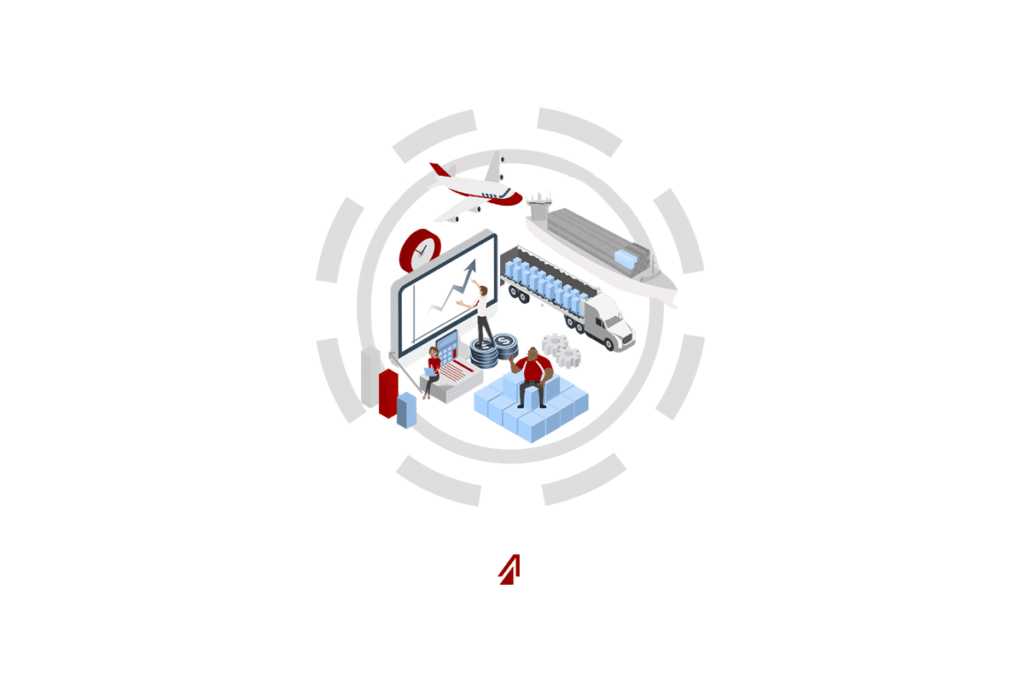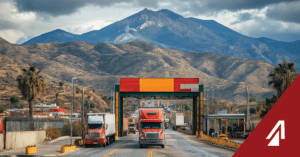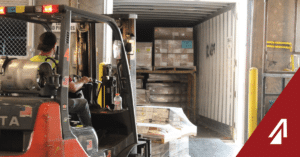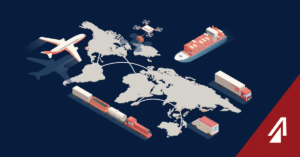Coronavirus
The coronavirus has continued into 2022 with additional variants and new complications. Concerns from the Omicron variant, and others, has continued to delay the return to normal for most of the US and global supply chains. These concerns are worsening significant issues like supply shortages, labor constraints, limited storage space, rising inflation, and rising delivery costs. Higher product demand for goods that contain semi-conductors, aluminum, or plastics are also increasing the supply chain crunch, and consumer necessities like food products and building materials are also becoming more scarce.
Experts expect easing later into 2022 – if the market can stabilize and additional global conflicts do not arise. But, it is too soon to say for sure.
GDP
According to the Bureau of Economic Analysis, 2021 showed one of the best growth rate percentages of any year since 1984. The US economy grew at a rate of 5.7 percent – compared to the 3.4 percent decline it experienced during the shutdowns of 2020. The current US economy is valued at approximately $22.9 trillion in 2021.
The global GDP also grew considerably in 2021. The International Monetary Fund is reporting that the global economy grew 5.9 percent to a total value of $94 trillion. Current projections see the growth reducing in 2022.
Employment
The unemployment rate rose back to 4% in January and is higher than earlier projections. As many as 952,000 people left the labor pool entirely in January as well. Overall, the unemployment rate for 2021 fell 2.4% and resulted in a job growth of 3.7 million jobs.
Inflation
In January, the inflation rate rose to 7.5%, another record high. This represents the highest rate since February of 1982 and is higher than the 7.3% projection. The largest contributors to inflation rates include energy (including gasoline), food and shelter, new vehicles, and medical services.
Manufacturing
The IHS Markit US Manufacturing PMI fell to 55.5 in January. This decline is in spite of increased production capabilities and is attributed to greater raw material scarcity. Manufacturing orders have slightly increased this month but issues with downstream price inflation have added considerable costs to end consumers.
Interest Rates
The Federal Reserve Board has signaled that it will soon be appropriate to raise target rate for federal funds. However, they have also emphasized that the path to that rate will depend on economic and financial developments and their implications.
Capacity
US ground capacity has tightened again in the new year; according to DAT Trendlines, the January Load-to-Truckload ratio grew to 8.9:1. This is a 43.5% rise over December’s ratio and reflects the growing truck scarcity issues faced in the US.
Internationally, IATA (International Air Transport Association) is reporting that there has been significant growth in demand for air transportation. This in the face of many US to China flight suspensions is reducing wide-body aircraft availability while simultaneously driving up flight costs.
Port congestion at the ports of Long Beach and Los Angeles has reduced due to the new air quality and safety measures set by Pacific Maritime Commission and others but unloading times have not improved. Currently, over 100 vessels wait to dock in these ports, not to mention those at dock already currently being unloaded. So, while capacity to load and ship is available, goods are not reaching the market because of the unloading crisis.
Regulations
The Ocean Shipping Reform Act of 2021 has been introduced to the United States Senate by Senators Amy Klobuchar (D-MN) and John Thune (R-SD). At the time of this writing, the act has been presented to the Committee on Commerce, Science, and Transportation but has not reached the Senate floor for open debate. The Ocean Shipping Reform Act of 2021 is a measure to make the Federal Maritime Commission (FMC) a “more effective federal regulator” while increasing visibility into international shipments and improving carrier export acceptance.
Rates
Rates are continuing to grow as factors like fuel prices, driver shortages, and general inflation are affecting the logistics market. January rates rose 3.6% over December and 31.5% over January of 2021.
Behaviors
Consumer behaviors are still heavily influenced by the COVID virus. More shoppers are focused on products or services for the home than for services or experiences – and not just any products. According to NielsenIQ’s 2022 State of the Consumer report, more consumers are focused on products that have better cost and quality, are more social and sustainable, and are more healthy and hygienic. Other top considerations are product origin and convenience.
Technology
Throughout 2021, more supply chain operations have adopted technology to fill the gap for worker shortages. While many of these technologies have been around for years, 2021 saw the greatest adoption rate of technologies like
- Cloud Computing & Storage
- Inventory & Network Optimization Tools
- Sensors & Automatic Identification
- Robotics & Automation
- Predictive Analytics
- Industrial Internet of Things
- 3D Printing (Additive Manufacturing)
- Autonomous Vehicles & Drones
- Artificial Intelligence Technology
- Blockchain & Distributed Ledger Technology
Advances to these technologies are progressing daily and more of these are becoming available to the average consumer.
Fuel Impact
Fuel prices have continued to rise along with inflation. January saw rates increase 2.3% over December and 38.9% over January of 2021. At this time, with global conflicts on the rise, fuel prices are not expected to fall any time soon.
Driver Concerns
In what seems to be a perennial issue, truck parking has continued to serve as the top driver concern for January. What’s worse, is that while this issue persists, it is seemingly overlooked by those in power to make the greatest difference.
For instance, take the Biden administration’s “Trucking Action Plan.” This document is over 2300 words and deals with the rollout of the Infrastructure Bill, and not once does it mention safe truck parking. Solutions exist to aid this crisis, but it is continuously overlooked.
The issue is worsening such that many drivers would rather retire or find other employment than deal with the subsequent issues of finding parking. Many drivers say that they must find a parking spot early in the day or they will not find a place at all. This cuts into available drive time, wages, and on-time-delivery percentages. Each of these complicates shipments and worsens driver conditions. As driver conditions worsen, fewer workers will become drivers, and that will affect the entire economy.



